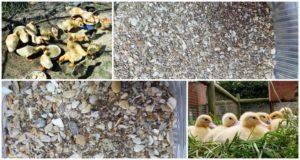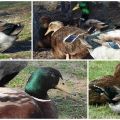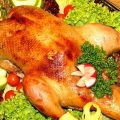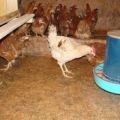How to distinguish a duck from a drake at home, sex determination methods
Without certain knowledge, it can be very difficult to determine the sex of a bird. At the same time, waterfowl are no exception. Many species of ducks are characterized by the absence of typical features that help to reliably determine the sex. To understand how you can distinguish a duck from a drake, you should pay attention to certain features. These include external differences, sex characteristics, behavior, voice.
What a drake looks like
The differences between females and males are significant or minimal. The wild drake has the following visual features:
- large sizes;
- massive beak;
- triangular forehead;
- expressive plumage of bright colors;
- some feathers in the beard area;
- the presence of a small feather crest on the neck.
Duck appearance
The following visual traits are characteristic of wild ducks:
- monotonous plumage - it mainly has dull and muted shades;
- trapezoidal forehead;
- no curls on the tail.
Sometimes ducks are larger than drakes. This is determined by the composition of the feed and some conditions of keeping. Therefore, it is not recommended to focus solely on this feature.
The main external differences
To distinguish birds by sex, you should focus on the data presented in the table:
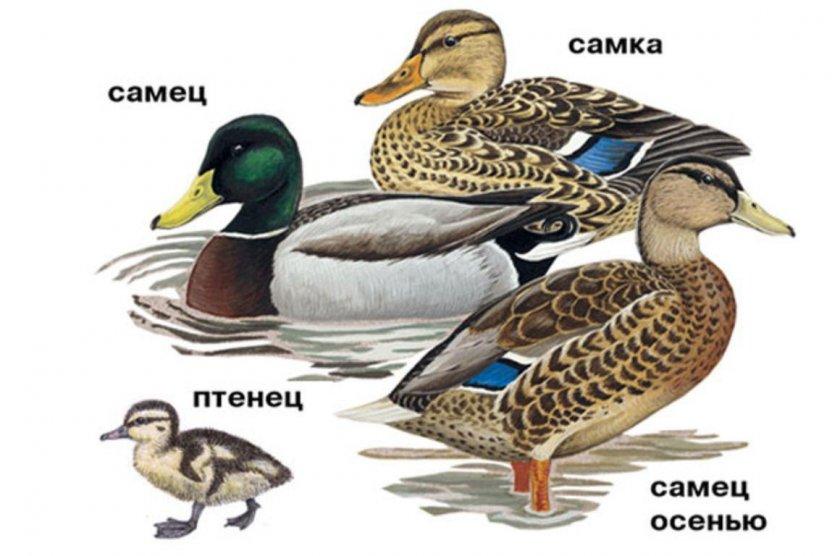
| Parameter | Drake | Duck |
| Weight | Drakes are characterized by a large and wide body. | Females weigh about half as much as males |
| Feathers | The plumage shade is determined by the breed, however it is bright and elegant | Dominated by muted and light shades of feathers |
| Head | Males are characterized by a long head, a wide triangular forehead. In this case, the skin goes behind the eyes. The beak is large and has a rich red hue. | The expansion from the beak to the forehead is trapezoidal |
| Neck | Is long enough and decorated with a bright tufted | There is no beard on the neck |
| Tail | Several feathers curl into a ring - this sign is noticeable as early as 3 months | No tail curls |
It will also be possible to determine the sex by the cloaca. To do this, the bird should be placed on a flat surface. It is recommended to do this with your back down. After that, move the skin in the area of the cloaca, lifting it in the direction of the abdomen. Females are characterized by the presence of 2 small balls in this zone.
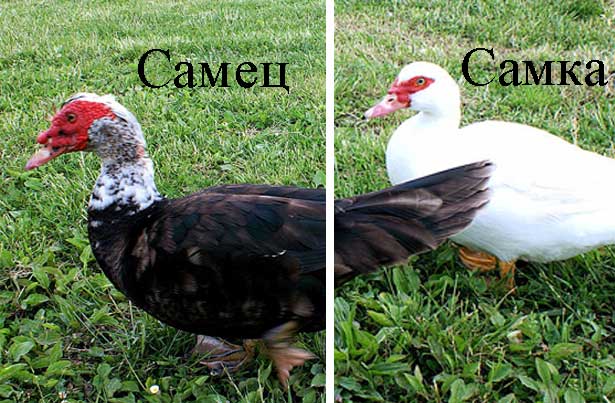
Sometimes poultry farmers are faced with the task of determining the sex of young ducklings. There are several ways that you can use:
- Take the duck by the paws and evaluate its behavior if you turn it head down. If a bird expresses nervousness or anxiety, it can be said that it is a male.He tries to twist and turn his head in different directions. Females behave calmly, keeping a fixed position.
- Males of most breeds are characterized by a pugnacious disposition. They often have fights. From an early age, drakes strive to pull out each other's feathers or try to peck at an opponent.
- Pay attention to the anatomical signs. There are special markings near the larynx of birds. In males, there are formations in the form of balls in the upper part of the chest. They can be easily felt.
Some differences also depend on the breed. So, males of the Bashkir breed are characterized by expressive curls that are in the tail area. Moreover, females have even feathers. This feature is clearly visible and helps novice breeders to determine the gender of birds.
The plumage of Peking birds will not help identify gender. The shade of the feathers is the same in females and males. The birds are covered with white feathers that run from beak to tail.
To estimate the sex, the weight of the ducks should be taken into account. The average weight of males is 3.9 kilograms, while females are 3.5.
How do you distinguish a female from a male by character?
To determine the gender of birds, you should focus on their nature. The drakes let the ducks go forward. At the same time, they stay behind and a little to the side. A tendency to conflict will also help to recognize males. Drakes are noisy and pugnacious. This behavior helps the herd leaders emphasize their dominance. In this case, their aggression will be directed at the rest of the males. Ducks have no tendency to conflict, have a calm disposition and do not try to fly away.
Sometimes there is a need to determine the sex of day old ducklings. To do this, it is recommended to do the following:
- Take the duckling in your right hand and clasp it around the chest.
- Place the thumb of your left hand on your throat, lifting your neck.
- With your index finger, feel the junction of the clavicle and shoulder blades. It has a triangular shape.
- In the center, there is or is not a round formation, which is similar in shape to a bubble. Its presence is typical for males. If there is no bubble, then it is a female.
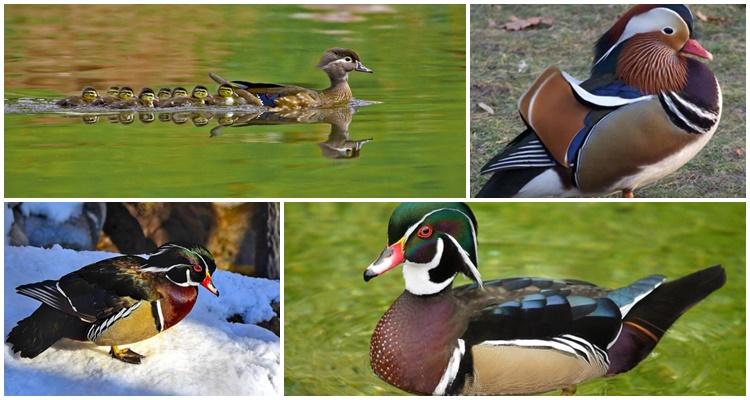
Sex detection by voice
To determine the gender at home, you should focus on the voice. It is much more often possible to hear any sounds from the ducks. Quacking familiar to all is the voice of a duck. At the same time, drakes hiss if disturbed.
Sometimes there are other types of voice guidance in the flock. These include:
- whistling;
- cackle;
- overflows.
If the flock is alarmed, it will easily be possible to distinguish the sounds that the males make. Drakes have a louder voice than females. But, in general, they are considered to be more silent and not inclined to use their voice to communicate. Females are forced to constantly make sounds - they are considered part of the maternal instinct and attract the attention of ducklings.
To distinguish a drake from a duck, there are a number of key signs to consider. First of all, it is recommended to focus on the appearance of individuals. It is also important to take into account the voice, behavior, gender characteristics.




